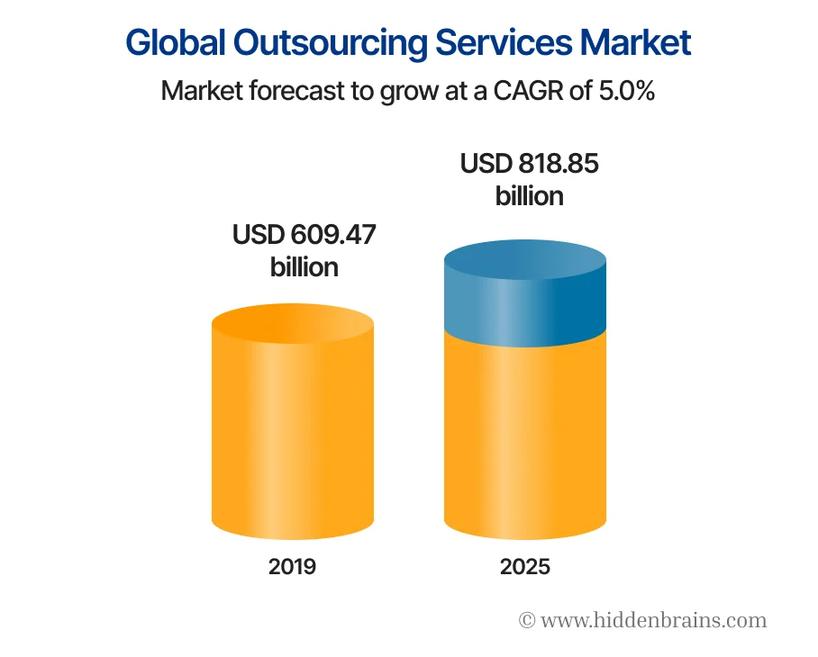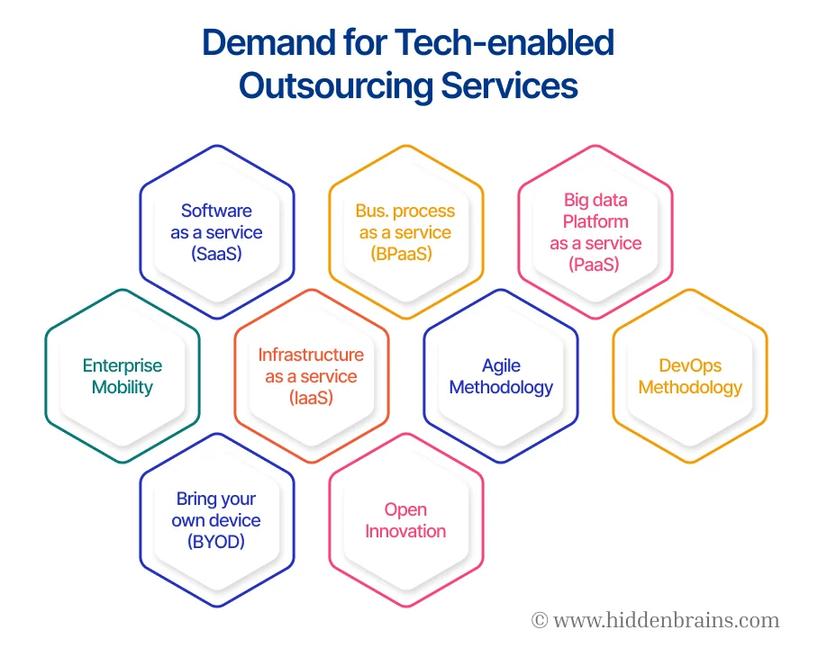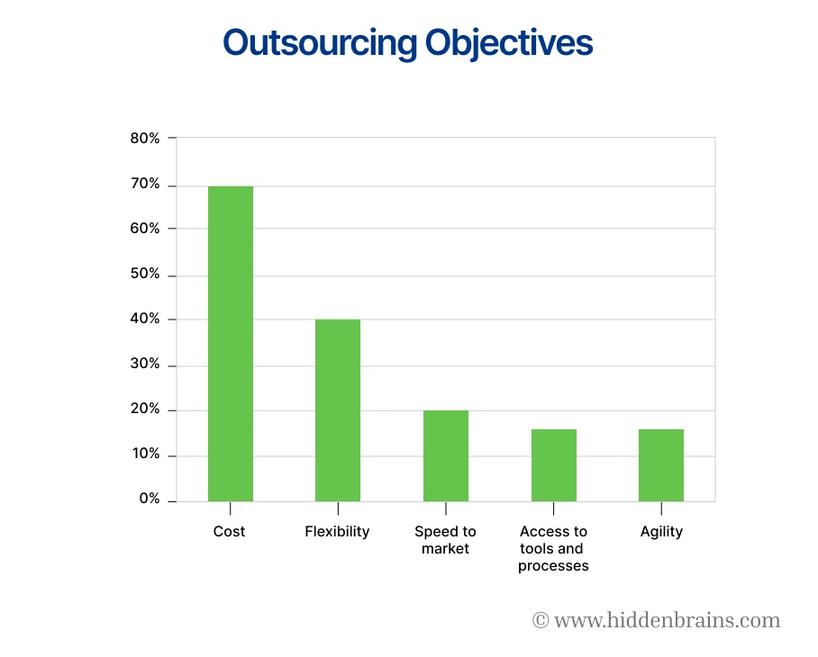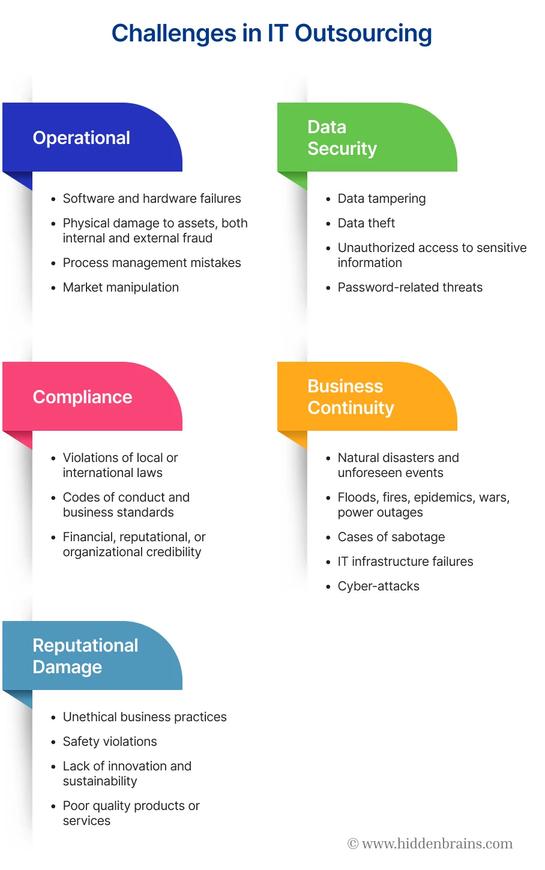WhatisIT Outsourcing?



Services Company to handle all or part of your business’s IT needs. This includes software development and systems maintenance to data backup and disaster recovery.
Before you take a plunge into IT outsourcing or partnering with a Offshore Software Development & IT Consulting
Company, here is everything you need to know that will allow your business to make the right decision.
The global outsourcing services market was valued at US$609.471 billion in 2019 and is expected to grow at a CAGR of 5.04% over the forecast period to reach a total market size of US$818.846 billion in 2025.



When you outsource your IT, you can tap into a larger pool of highly skilled workers than you would have access to internally.
One of the main reasons businesses outsource their IT is to save money.
Hiring an external company will allow you to cut operational costs such as office space, utilities, taxes, equipment and other overhead expenses.
A trusted IT outsourcing services company can take care of your IT needs more efficiently than you could or with an in-house team because they specialize in what they do.
With so much information at our fingertips, it’s essential to keep up with the latest trends in technology. Having someone else take responsibility for your IT needs relieves you from dealing with everything when something goes wrong and gives you time to focus on growing your business.
When you outsource your IT tasks, there is a higher chance that one person within the company has expertise in multiple areas like coding and system design.
If you don’t know exactly what skill set you need now but may need them in the future, then hiring a IT consulting services company means that you don’t have to invest time training someone to realize later that they don’t have the skills needed.
You also won’t have to invest time training people who might not stay long term. Depending on your contract with the agency, employees are assigned temporarily or rotated between projects based on the current demand for those skill sets.
Enterprises of all shapes and sizes are already grappling with embracing the concept of the new normal. Businesses are already grappling with the idea of a “new normal” – a term that epitomizes change in ways of working. The agility with which organizations respond and adapt to the new normal will determine who will fall behind and thrive in the postpandemic world.
First, you may not have as much control over the work being done.
Second, you may have to pay more for services than if you were to do them in-house.
Third, communication issues could arise if you’re working with an offshore team.
Fourth, you may not be able to get the same level of customer service as you would from an in-house team.
Fifth, many outsourced companies require that you sign longterm contracts or make significant investments upfront.
And sixth, it’s harder to keep employees on hand who know how to use new technology if they’re busy helping other businesses.

If you’re considering outsourcing your IT needs, you should keep a few things in mind to make sure it’s the right fit for your business. You’ll need to decide which outsourcing model makes the most sense. Then, you’ll need to consider the pros and cons to see if it’s genuinely worth it. Here are a few tips to help you do outsourcing work for your business
Determine what type of outsourcing model is best for you.
Be aware of any potential risks
options
making the leap
Project-based outsourcing is best for one-time projects or shortterm needs.
Staff augmentation outsourcing can be a good solution when you need extra help but don’t want to add full-time employees.
Managed services outsourcing is a comprehensive solution that can provide long-term support for your IT needs. It may be the right choice if you want to outsource your entire IT operation.
1.) Time & Materials (T&M): In this model, the client pays for all costs incurred by the service provider, including labor hours and hardware, software, maintenance, and administrative costs.
2.) Fixed Price: The fixed price model is exactly as it sounds – clients pay a set price regardless of resources or hours used.
3.) Dedicated Hiring: Hire expert developers for quick team scaling or hire a developer for emerging/niche technologies.
Like many businesses, you may be considering IT outsourcing services for your development and maintenance needs to improve your bottom line and achieve better profits. Understanding which engagement and pricing model best suits your business needs is essential, allowing you to make an informed decision that aligns with your business goals.
